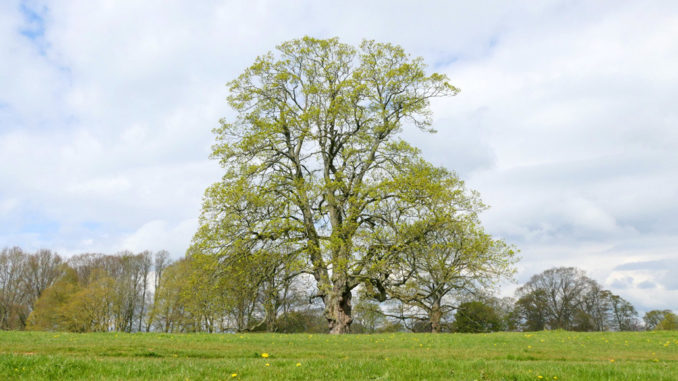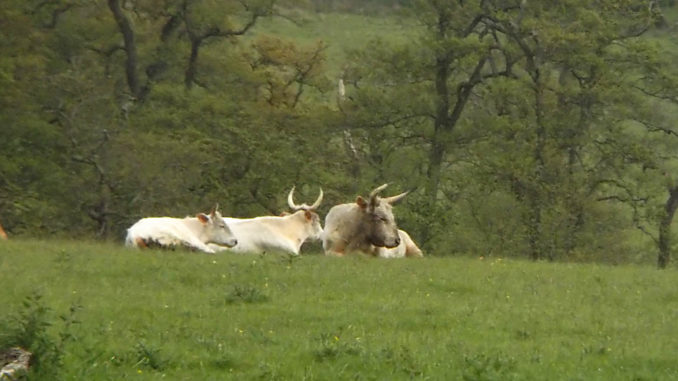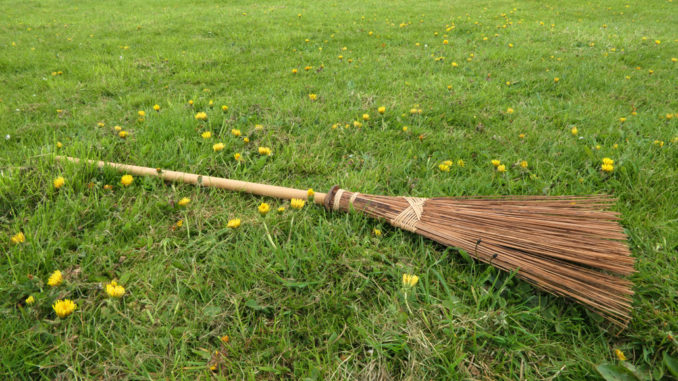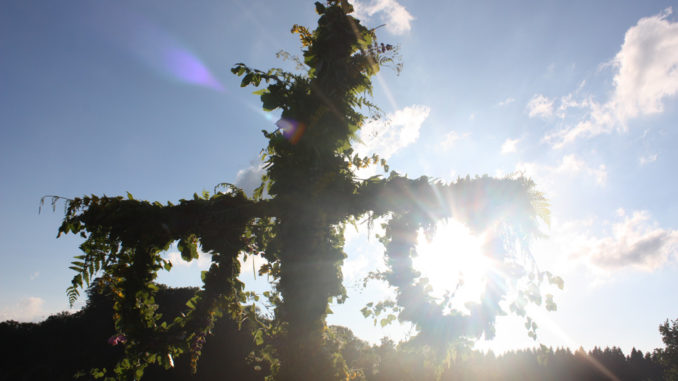
© DMG, Going Postal 2021
Beltane
This important festival has been reinvented umpteen times throughout the ages. I knew it from childhood as May Day. On a couple of occasions while at primary school our class was forced to dance around a home-made Maypole, fashioned out of a netball stand with the hoop removed. As an eight or nine-year old boy, skipping and dancing with girls around a big pole while holding ribbons was never high on my ‘to do’ list, but on the plus side, it did get us out of the classroom for a day and into the warm sun on the playing field. The dances must have been pretty fool proof, as I don’t recall the teacher getting irate because the pattern of the ribbons being all wrong. Or maybe she just didn’t care and was enjoying a day out of the classroom as much as we were.
As with many of these festivals, different cultures celebrated in similar ways, each going by a different name, but the most common one to survive is Beltane, which is derived from ‘Bel’, a Celtic god, meaning ‘the bright one’, and ‘teine’, meaning fire. When combined Beltane means ‘bright fire’ or ‘goodly fire’. It seems to be rooted deepest in Ireland, Scotland and the Isle of Man, although relatively modern celebrations have been embraced and adapted by other parts of the country, and similar celebrations are held in many non-Celtic lands.
Beltane is one of the cross-quarter days, falling halfway between an equinox and solstice, which makes it one of the major celebrations in Celtic culture as it marks the transition between seasons: in this case the end of Spring and the beginning of Summer. And as with most of these festivals, a feast and lots of fire is involved. Some Celtic traditions only split the year into two halves—light and dark, or summer and winter—additionally making Beltane one of the two most fundamental turning points of the year, as it marks the end of darkness and the return to light—the exact opposite of Samhain.
You may also recall that Samhain is a time when the veil between our world and other worlds was at it’s thinnest, well it is the same with Beltane. Where Samhain is a time for introspection and dwelling on lost ancestors, Beltane is a time to honour life.
Some customs involve leaving offerings at wells, and other sacred places to appease and commune with the spirits and fairies who dwelt there. These lands have a rich, but fading, mythology of boggarts and faeries, which can be capricious things, and are nothing at all like the Victorian or Disney reinventions of them. The ancients clearly lived in fear of upsetting forces they feared but didn’t understand.
The fires of Beltane were lit to honour the sun and encourage the brightness of Bel to nurture the coming harvest and protect the community. Supposedly Bel had to be persuaded to assist through the efforts shown by the people, essentially an early version of the adage ‘you only get out it what you put into it…’

© DMG, Going Postal 2021
All the fires in the community were put out, and a special fire was kindled on Beltane Eve. Known as the ‘Tein-eigen’, or ‘need fire’, people would jump through it for fertility, and to purify and cleanse. Sometimes people would dance around the fire clockwise. The Gaelic folk were primarily herdsmen, so cattle were also driven through the smoke for the same reasons. It must have been a pleasant change for the beasts to be included in the celebration without being part of the feast.
Some specify that multiple fires had to be lit, and that the ashes of the fire were smudged on faces and later spread on the fields. It is possible that they were dimly aware of the benefits of adding nutrition to and controlling the pH values of their soil, even if they didn’t understand it. At the end of the celebration, villagers would supposedly relight their own home fires from the Teineigen.
The most noticeable difference between Beltane and other annual fire festivals was the great coming together of the whole community. This was the first time of the year when the weather was reliable enough to permit the entire community to come together again. Up until now, small close-knit gatherings could be had indoors—sheltering from the cold and the wet—but the change in the weather meant a large communal celebration was possible. It was a truly joyous time, a celebration of life.
Beltane became a popular time for traditional betrothals lasting ‘a year and a day’, after which the couple would either stay together or part company without any recriminations. Couples would jump through the Beltane fire together as a joint pledge to each other. Vows were exchanged, as were token items which were usually—but not always—rings.
‘Handfasting’ was a popular ceremony, and one which friends of mine included as part of their wedding. The couple’s hands are tied together (tying the knot) with a cord or ribbon in a figure of eight to symbolise them coming together. Later in the ceremony, the knot is undone and the ribbon or cord removed, to show that the couple are remaining together through their own choice.

© DMG, Going Postal 2021
One other budget option was ‘jumping the broomstick’. The marriage of choice for those who couldn’t afford—or didn’t want—a church wedding, but which still allowed them to be accepted by their neighbours as a married couple. The key part of the ceremony literally consisted of the happy couple jumping over a broom lying on the ground. This represented a threshold, and taking a step over it into their new life together.
Another staple celebration of Beltane is maypole dancing. The earliest version of this custom appears to be a ritual associated with fertility, where a tree—representing male virtility—would be stripped of its branches and decorated with garlands of flowers. Some historians believe this was originally of Germanic origin, while others say it arrived here 2,000 years ago from the popular Roman spring celebration of Floralia, which also involved dancing around a tree which had been stripped of its limbs and leaves and decorated.
Nevertheless, the association between fertility and the maypole was present long ago, and couples would commonly arrive for the maypole dance looking rather dishevelled after a night of lovemaking out in the woods or fields. This could have been more than mere frolicking, possibly stemming from a belief that they were blessing the fields and the animals.
By the Middle Ages, most villages had a maypole celebration. The pole was often erected on the village green, but some neighbourhoods had one which was a permanent fixture. Our May Day holiday also originates from this period, with most labourers granted a rest day. I doubt this was out of the goodness of the hearts of the landowners and rulers, but rather a reluctant acceptance that there was simply no chance of any work whatsoever being done on that day, with workers being too preoccupied with partying, getting intimate with each other, and dancing around a massive erect phallus in the middle of the village.
This was all a bit too much for Cromwell, who abruptly ended the fun by banning maypoles with an Act of Parliament in 1644. Culturally speaking, I suppose this was like having a wild 18th Birthday party cut-off at its peak by your strict and humourless parents arriving home and declaring that they didn’t much like your music and demanding to know why all the beds upstairs were in disarray.
Happily, the interlude was short, and maypoles and celebrations were reinstated as part of ‘Merrie England’ after the restoration in 1660. Rather amusingly, a 17th Century writer in Oxford, Anthony Wood, noted that ‘a maypole… [was] set up on purpose to vex the Presbyterians and Independents.’ Attempts to cut it down failed, and it was left to stand as a triumph of the restoration.
Maypoles were also seen as sacred and a source of pride among a community, and they were sometimes targeted by youths from rival villages trying to take them down. One such incident which sounds like it spiralled out of control was reported in 1772 in the Derby Mercury: “a body of young fellows from Loughborough, who formed a plot to carry off the maypole, which they executed at night… may be the cause of mischief and bloodshed, for the heroes of Quarndon vow revenge and are forming alliances with their neighbours of Barrow and Sheepshead, and give out they will soon march in a body to retake their favourite maypole.’
A serious business indeed, and both cases show that trolling your opponents is clearly not a recent phenomenon.

The most enduring image of a maypole these days is with children dancing around it clutching brightly coloured ribbons, but ribbons didn’t make an appearance until the 1800s. Illustrations before this period show adults holding hands in a circle and dancing around the pole.
A dance involving plaiting ribbons originating from Italy and France was brought to British audiences by travelling performers, with the first documented instance being on stage in the Victoria Theatre in London in 1836. It was adopted by an English teacher training school, and then spread across most of southern and central England.
The concept of a May Queen also appears to have been reimagined and sanitised around this time. Festivities began to include a young girl or maiden dressed in robes, and being crowned, but this appears to be a Victorian personification of the goddess who gave birth to Bel at the winter solstice. Beltane is when Bel has reached maturity and is ready to become a lover. In some tales, the Green Man, or Jack-in-the-Green, or the young Oak King falls in love with the maiden goddess and their union is consummated. The figures of the May Queen and King symbolise the union between heaven and earth, which reflects the underlying theme of a year of two halves—of light and dark. In some parts of England, a Green Man is carried through town in a wicker cage as the townsfolk welcome the beginning of summer.

Traditions and customs have yet again been reinvented and revived to fit modern sensibilities by the spiritual-minded after the traditional celebrations largely died out by the middle of the 20th Century. The biggest Beltane celebration seems to be held in Edinburgh, though it is a thoroughly modern, eclectic affair, and many who consider their religion to be pagan avoid it for this reason. To be fair, it looks like a big outdoors party with food, lots of fire and semi-naked dancing so while some might feel that it’s missing the point, I’d simply suggest that we don’t have enough parties like that anymore. Or perhaps, like the physicists mentioned in the Hitchhikers’ Guide to the Galaxy, I just don’t get invited to those sorts of parties.
We still have a bank holiday for Yule, to allow families time to feast and celebrate. And we still have a bank holiday for Beltane, but it feels like it’s been hollowed out. We don’t seem to do anything which our ancestors did to justify having the day off in the first place. So regardless of how you occupy yourself on either Beltane or May Day, just make sure you don’t waste the day. Do something which brings joy and celebrates the energies and pleasures of being alive.
Next up: The sun is at its strongest at Litha.
© Carvetii 2021
The Goodnight Vienna Audio file
Audio Player



